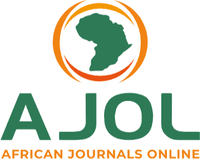ASSESSMENT OF PHYSICO-CHEMICAL AND MICROBIOLOGICAL QUALITY OF SOME PACKAGED (SACHET) WATER SOLD IN GOMBE METROPOLIS
DOI:
https://doi.org/10.56892/bima.v7i2.421Keywords:
NSDWQ, TAMBPC, Sachet water, E. coli., faecal coliformAbstract
Access to safe and clean drinking water is a fundamental necessity for human health and well-being. In Nigeria, a country with a rapidly growing population and diverse geographical regions, ensuring the provision of clean and potable water poses significant challenges. The goal of this research is to assess the quality of ten (10) brands of sachet water available in Gombe metropolis. The samples were tested physiochemically and microbiologically, including a total aerobic mesophilic bacteria plate count, mold/yeast count, several tube fermentation techniques, and an E. coli test. The findings of the physicochemical study revealed that most parameters such as taste (unobjectionable), temperaturewere within the World Health Organization (WHO) and local/national regulatory body Nigerian Standard for Drinking Water Quality (NSDWQ) standard limits (acceptable range) for drinking water quality. The lowest and highest pH recorded was 7.5 (A, C, F) and 8 (I) while for turbidity, the highest and lowest values of 1.61NTU (A) and 0 NTU (I). For total dissolve solids, 102mg/l for sample F was highest value attained. Total Suspended Solids had 49mg/l for sample C as the highest value which falls within the acceptable range. Total hardness recorded the highest value of 159 for sample D exceeding the recommended limit allowed.The Total Aerobic Mesophilic Bacteria Plate Count (TAMBPC) found that four (4) water samples (B, G, J and I) had counts of 117, 287, 157 and 377cfu/100ml respectively that exceeded the NSDWQ standard (100 cfu/100mL). The mould/yeast count for four water samples (A, J, G and I) were 1, 1, 2 and 3cfu/100ml respectively thus higher than the regulatory agencies' limit (zero cfu/100mL), while the coliform test was satisfactory for just two (2) water samples (H and E). The E. coli test also came back positive for two (2) water samples (G and I), making them unsafe to drink. The majority of the sachet water samples failed microbiological examinations in the study, with the exception of two (2) sachet water (Hand E) that met NSDWQ/ WHO standards. The presence of faecal coliform especially E. coli has several health implications hence proper treatment and purification of the sachet (packaged) water is recommended.





